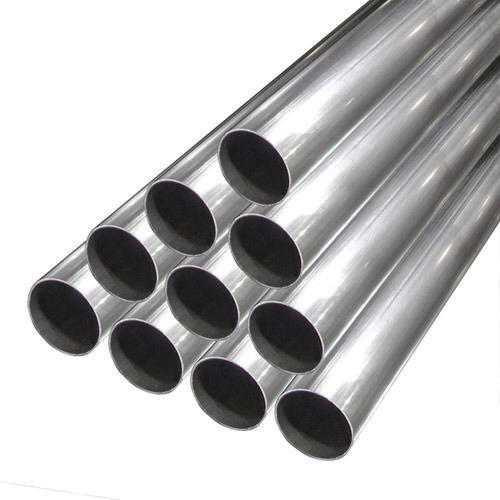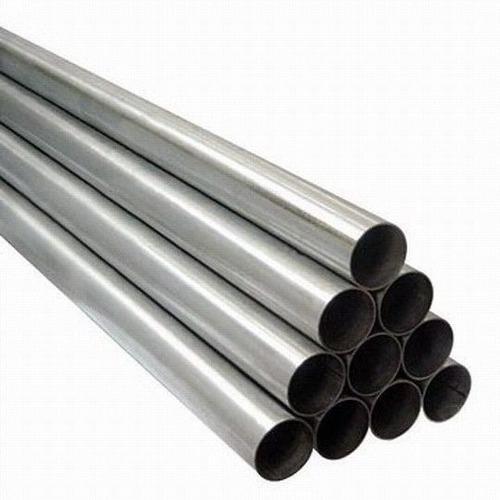
Is the stainless steel pipe rusty?
When brown rust spots (spots) appear on the surface of stainless steel pipes, some people think that "stainless steel does not rust, and rust is not stainless steel. It may be that there is a problem with the steel." In fact, some stainless steel materials with low nickel content are rusty, so the rusty material may also be stainless steel. Nowadays, stainless steel pipe applications are well-known. Stainless steel can also rust under certain conditions
Stainless steel has the ability to resist atmospheric oxidation---that is, rust resistance, and it also has the ability to resist corrosion in media containing acid, alkali and salt---that is, corrosion resistance. However, the size of its corrosion resistance varies with the chemical composition of the steel itself, the state of mutual addition, the use conditions and the type of environmental media. For example, 304 steel pipe has excellent anti-corrosion ability in a dry and clean atmosphere, but when it is moved to a coastal area, it will quickly rust in sea fog containing a lot of salt; while 316 steel pipe has performance good. Therefore, it is not any kind of stainless steel, which is corrosion-resistant and does not rust in any environment.

316 steel pipe
The varieties of stainless steel pipes are: 1Cr17Ni7 (301) 0Cr18Ni9(304) 1Cr18Ni9Ti (321) 316 316L 309S 310S 0Cr13 1Cr13 2Cr13 3Cr13 0Crl8Ni9 1Crl8Ni9Ti 00Crl7Nil4M02 0Crl7Ni12M02 1Cr18Ni9(Ni11304) 0Cr18Ni9 0302Cr18Cr1302(Ni11) 0Cr18Ni9(Ni11) (309S) OCr25Ni20(310s) Ocr17Ni12Mo2(316) 00Cr17Ni14Mo2(316L) 0Cr19Ni13Mo3(317) 1C18Ni9Ti Ocr18Ni9Ti(321) 00Crl9Ni1O 0Crl8Nil2M02Ti 0Cr25Ni20, OOCrl9Nil3M03
Stainless steel relies on a very thin, strong, dense and stable chromium-rich oxide film (protective film) formed on its surface to prevent oxygen atoms from continuing to penetrate and continue to oxidize, thereby obtaining the ability to resist corrosion. Once this film is continuously destroyed for some reason, oxygen atoms in the air or liquid will continuously infiltrate or iron atoms in the metal will continuously separate out, forming loose iron oxide, and the metal surface will continue to be rusted. There are many forms of damage to this surface film, and the following are more common in daily life:
1. The surface of stainless steel has accumulated dust containing other metal elements or attachments of foreign metal particles. In moist air, the condensation between the attachment and stainless steel connects the two into a micro battery, which initiates an electrochemical reaction , The protective film is damaged, which is called electrochemical corrosion.
2. The surface of stainless steel adheres to the organic juice (such as melon, vegetable, noodle soup, sputum, etc.), which forms organic acid in the presence of water and oxygen, and the organic acid will corrode the metal surface for a long time.
3. The surface of stainless steel adheres to acid, alkali and salt substances (such as alkaline water and lime water splashing on the decoration wall), causing local corrosion.
4. In polluted air (such as the atmosphere containing a large amount of sulfide, carbon oxide, and nitrogen oxide), it will form sulfuric acid, nitric acid, and acetic acid liquid spots when encountering condensed water, causing chemical corrosion.
The above conditions can cause damage to the protective film on the surface of the stainless steel chemical pump and cause rust. Therefore, to ensure that the metal surface is permanently bright and not rusted, we recommend:
1. The surface of the decorative stainless steel chemical pump must be cleaned and scrubbed frequently to remove attachments and eliminate external factors that cause modification.
2. Use 316 stainless steel pipe pumps in coastal areas, which can resist seawater corrosion.
3. The chemical composition of some stainless steel pipes on the market cannot meet the corresponding national standards and cannot meet the 304 material requirements. Therefore, rust will also be caused, which requires users to carefully choose products from reputable manufacturers.

304 steel pipe
Stainless steel pipe materials that do not rust: The main materials are: 304 (0Cr18Ni9), 304L (00Cr19Ni10), 321 (1Cr18Ni9Ti), TP304, TP321 (0Cr18Ni10Ti), 316L (00Cr17Ni14Mo2), TP316L (0Cr17Ni12Mo2), 316Ti (0Cr18Ni12Mo2Ti), 310S (0Cr25Ni20), 309s (0Cr23Ni13), 317 (0Cr19Ni13Mo3), 317l (00Cr19Ni13Mo3), 347 (0Cr18Ni11Nb), 904L (00Cr20Ni25Mo4) and other austenitic stainless steel pipes.